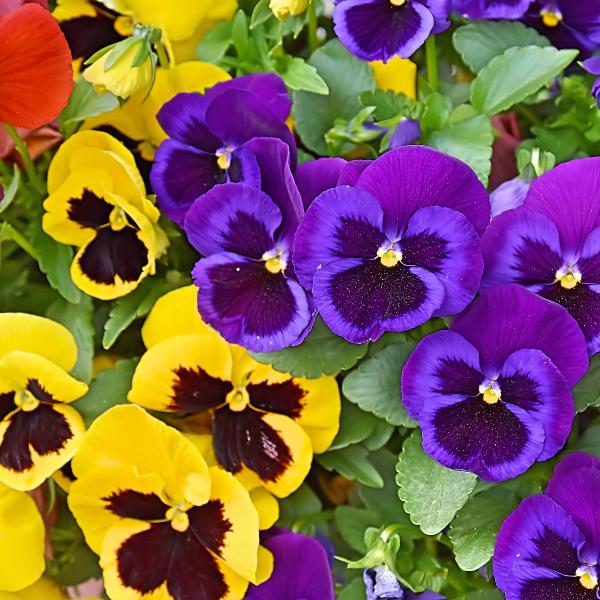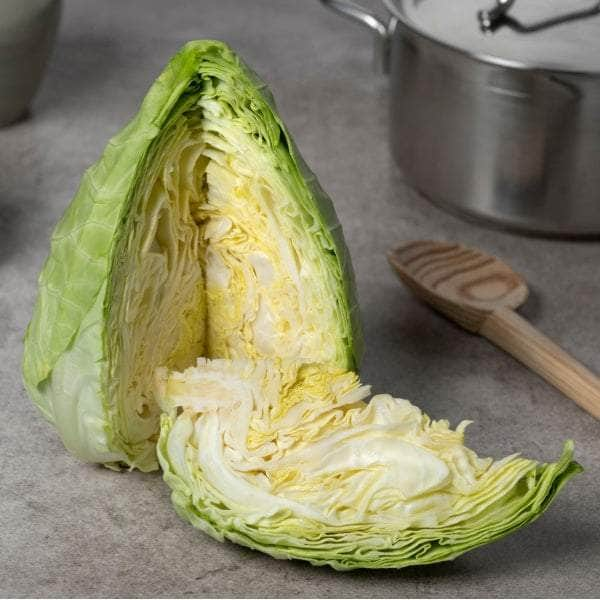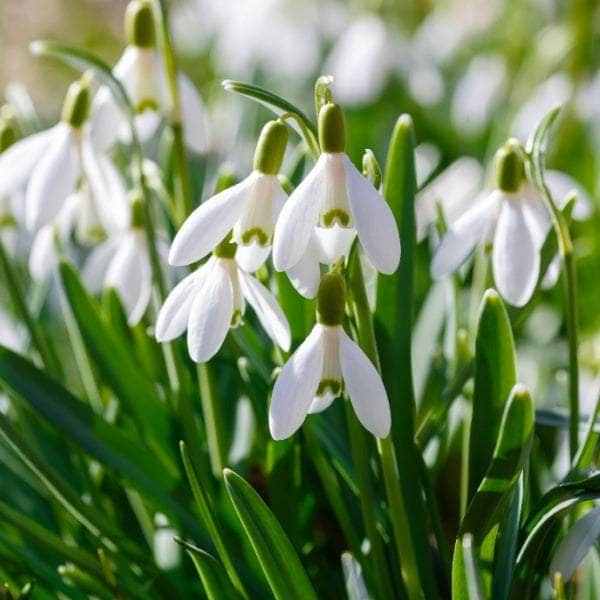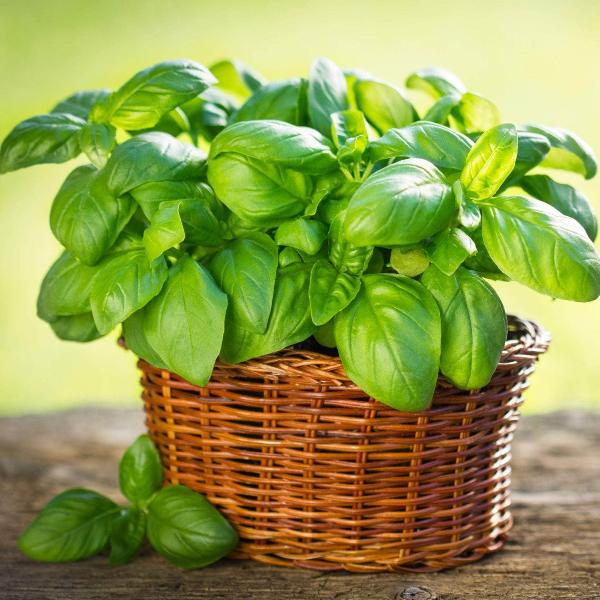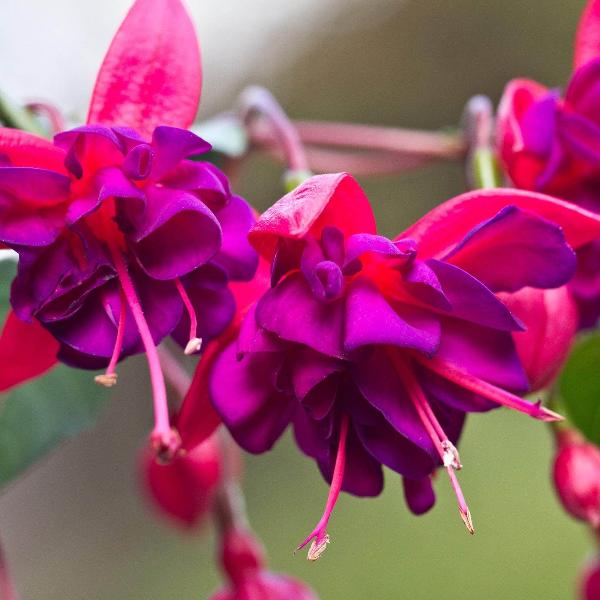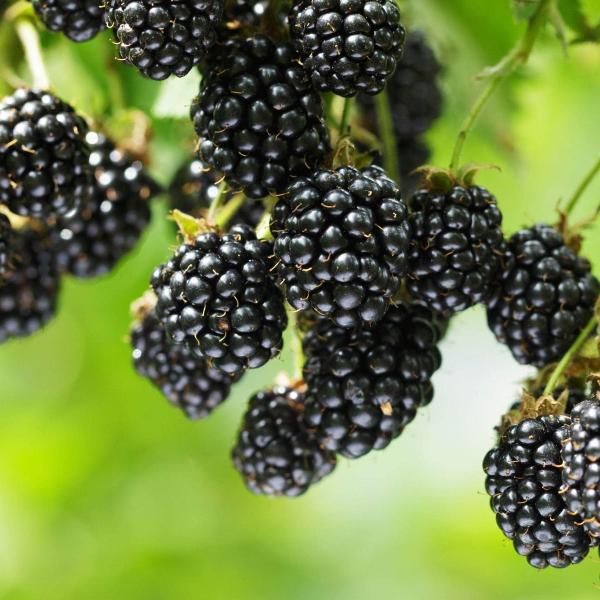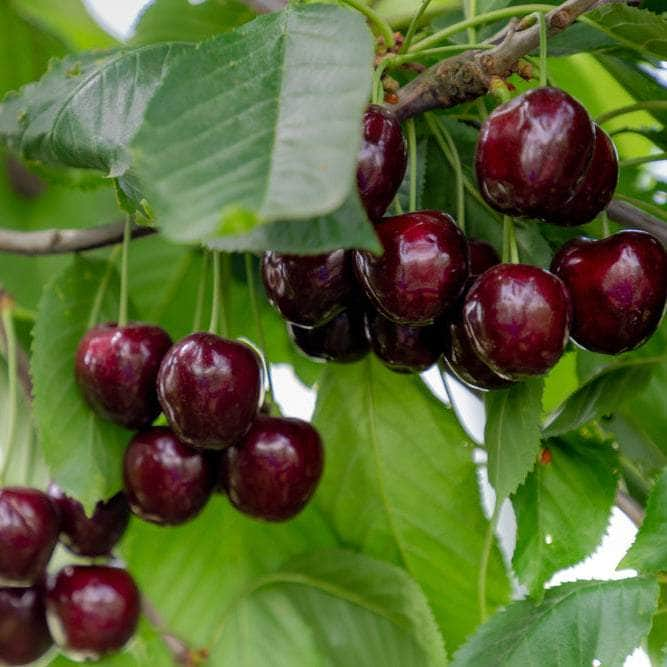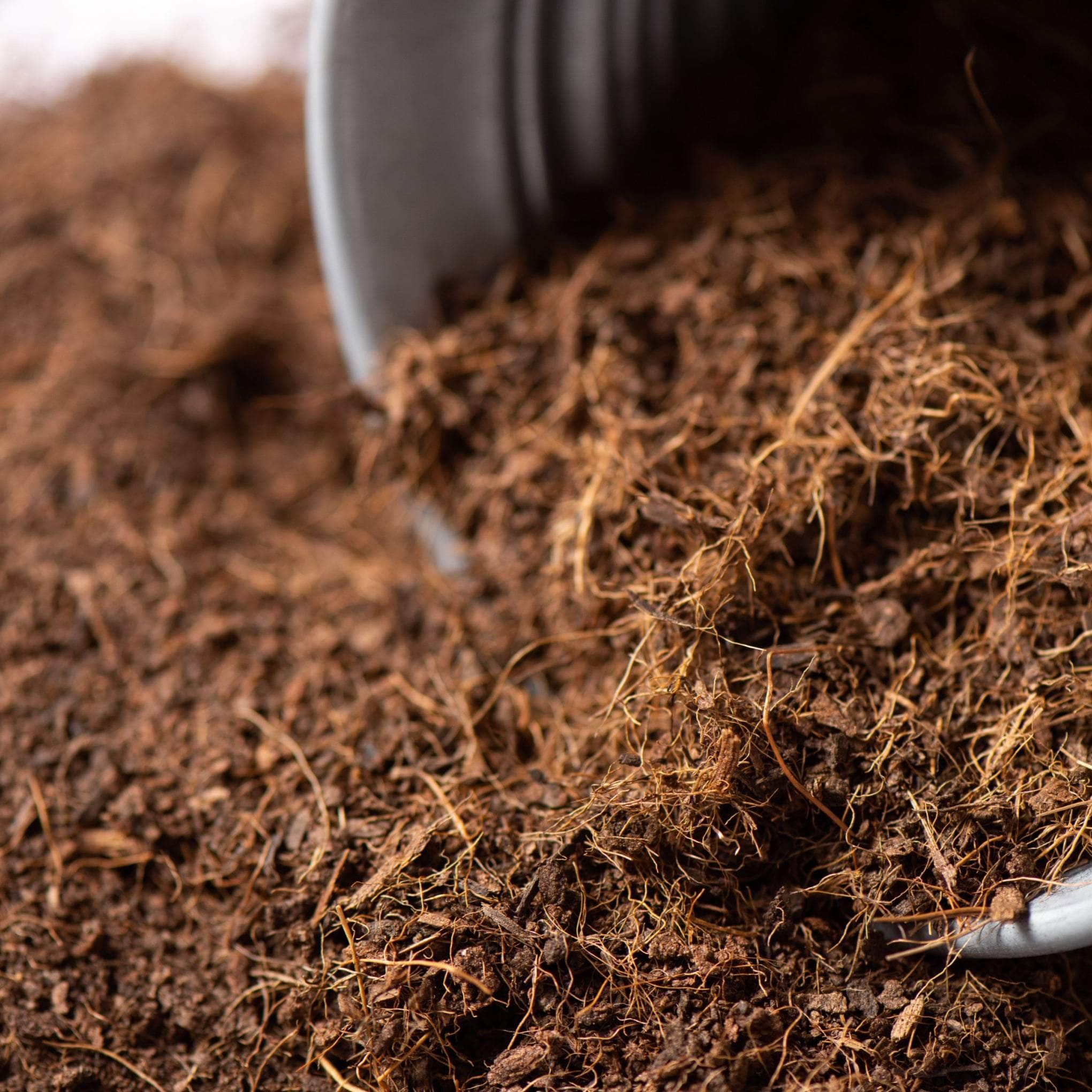The Ultimate Guide to Growing and Caring for Lobelia Plants
Welcome to our comprehensive guide on growing and caring for Lobelia plants, a favourite amongst gardeners for their vibrant blue flowers and versatility. Whether you're a seasoned green thumb or a budding gardener, this guide will provide you with all the knowledge you need to successfully plant, grow, and care for Lobelia, from choosing the right variety to dealing with common pests.
We'll delve into the different types of Lobelia, including annual and perennial varieties, and spotlight the stunning Lobelia Erinus Sapphire.
We'll guide you on how to plant and grow Lobelia in your garden or in hanging baskets. Stay with us as we navigate common issues and their solutions, and explore how to incorporate Lobelia into your landscape design.
Whether you're growing Lobelia from seed or buying a ready-to-plant flower, this guide is your one-stop resource for all things Lobelia. Let's dive in and start our journey to a blooming garden filled with the beauty of Lobelia.
Understanding the Different Types of Lobelia

Diving into the world of lobelia plants, one can't help but marvel at the sheer variety and beauty these flowers offer. From the vibrant hues of annual lobelias to the enduring charm of perennials, there's a type of lobelia for every garden and every gardener. In this section, we'll explore the different types of lobelia, focusing on their unique characteristics and the distinct charm they bring to your garden.
Whether you're a seasoned gardener or a novice, understanding the different types of lobelia can help you choose the right plant for your garden. From the annual variety that blooms with a burst of colour to the perennial variety that offers a steady display of beauty, each type of lobelia has its own allure. Let's delve deeper into the world of lobelia plants.
Annual Lobelia Varieties
The diverse world of lobelia bristles with an array of annual varieties you can opt for. These annual lobster flowers which are commonly referred to as "basket lobelias," contribute subtly to any garden. They are renowned for their cascading small flowers, persistently blossoming in vibrant hues of blue.
An annual lobelia variant like the 'Crystal Palace' flaunts deep blue blooms, a favourite among garden enthusiasts. The grace and charm encapsulated in the 'Riviera Series', another type of lobelia, cannot go unnoticed. They are a prolific mass of tiny flowers, quite fitting for containers and edges.
Now, if you are interested in a unique strain, the 'Cambridge Blue' variety of lobelia is worth a mention. With their pale-blue flowers, they add a tranquil charm to any garden. Truly, annual lobelias, with their striking blue flower spectrum, prove to be a mesmerising starting point to the Lobelia journey.
With proper care, these robust verities of annual lobelia can keep your garden aglow throughout the season, reinforcing the beauty of nature, right from spring until the first frost. Growing lobelia from seed isn't too challenging either; adding to the allure of these lovable annuals.
Perennial Lobelia Varieties
When speaking of lobelia flowers, perennial varieties definitely merit discussion. These robust plants boast a life span longer than their annual counterparts, providing colour and beauty year-round. The perennial lobelia flowers emanate intense hues, often showing off in a vibrant display of blues. The most common variety known for its blue flower is the Lobelia Erinus Sapphire.
This plant, unique with its deep blue flower, blooms throughout the summer, enhancing garden landscapes with a small but vibrant touch. It’s essential to note that while many perennials improve as they age, these lobelia plants steal the show right from the start.
With their pleasing aesthetic and the ability to flourish in a variety of climatic conditions, perennial lobelias are the perfect choice for those who crave constant, unwavering beauty in their gardens. Grow lobelia from seed and watch as your garden transforms into a stunning show of rich colours and textures.
Spotlight on Lobelia Erinus Sapphire
Lobelia Erinus Sapphire, a noteworthy variety of Lobelia, grows as a billowing cascade of sapphire-hued flowers. This variety's unique feature is its radiant blue flowers, akin to a precious sapphire's luminosity.
Sapphire Lobelia's small flowers are a spectacle to behold, attracting both gardeners' attention and a myriad of pollinators. The contrast between the vibrant blue flower and surrounding green foliage strikes a beautiful balance in any garden.
Besides, a crucial part of growing Lobelia from seed successfully is understanding each variety. In the case of Lobelia Erinus Sapphire, they are relatively easy to grow and maintain, making them a favourite among gardeners.
How to Plant and Grow Lobelia

In this section, we'll delve into the specifics of how to plant and grow Lobelia, a versatile and vibrant flowering plant. Whether you're a seasoned gardener or a novice, the process of planting and nurturing Lobelia can be a rewarding experience. From sowing the seeds to watching the blooms flourish, each step is a journey of discovery.
Lobelia thrives in a variety of conditions, making it a popular choice for many gardeners. It can adapt to full sun or partial shade, and it prefers moist soil. Whether you're in a warm climate or cool weather, Lobelia can be a proven winner in your garden. Let's explore how to plant Lobelia in your garden, grow it from seed, and care for your plants to ensure they bloom beautifully.
Planting Lobelia in Your Garden
Planting lobelia in your garden can be quite straightforward. The plant prefers full sun to partial shade conditions and will thrive best in moist soil. Whether you're establishing your garden in a warm or cool climate, lobelia can endure.
The flower forms a stunning feature in your garden thanks to its vivacious bloom. It's vital to consider its bloom time while planting. Knowing the flower's growth pattern ensures maximum visual appeal.
An interesting bit about lobelia is that you can grow it in diverse settings. It can be positioned elegantly in both containers and landscape designs. It's versatility makes it worthy of consideration for any garden concoction.
When you plan to plant lobelia, it's an adventure. In anticipation of the blossom's bloom, you'll curious of the spectacle that awaits. So, plant your lobelia. Watch it grow. And don't forget to share your experience.
Growing Lobelia from Seed
The process of growing Lobelia from seed requires a bit of patience and care. Firstly, it's crucial to remember that Lobelia seeds can be somewhat sensitive to fluctuating temperatures. The ideal time to sow your seeds is late winter or early spring when the warm climate gradually kicks in, taking care not to expose them to harsh arctic blasts.
Lobelia prefers a sun to partial shade situation, so ensure your seeded containers receive adequate light but not scorching rays. Following this, the containers should be placed in a cool weather spot, maybe your patio or balcony, where they can get the right mix of sun and shade.
Moist soil promotes better germination. As a general rule, keep the soil in the pot consistently moist but avoid waterlogging. Remember, seeds can take up to three weeks to sprout, so don’t rush this process. You should be able to transplant your lobelia seedlings into your garden once all threats of frost have passed.
Undeniably, growing lobelia from seed is labor-intensive, but it's worth every moment when you see the beautiful blooms gracing your garden. It's indeed a rewarding horticultural endeavour, showcasing the enchanting power of nature, one bloom at a time.
Caring for Your Lobelia Plants
Caring for your Lobelia plants involves several key steps for a healthy, blooming garden. Firstly, Lobelias thrive in a condition frequently termed as 'sun or partial shade'. This means they need access to sunlight, but also require periods of cool shade to not wilt away. Full sun-bearing varieties are also commonly available and may provide a colourful addition to your garden.
Lobelia plants prefer moist soil conditions. Keeping up the watering schedule is a vital part of plant care. Overwatering or underwatering can harm your beautiful lobelia garden. So make sure the plants stay neither too dry nor too wet.
In warm climates, look forward to luscious growth and delightful bloom time, while in cool weather, lobelia still holds up well although it may need a bit extra care. The plant exhibits a clear preference for the warmer side of the spectrum, but it's an adaptable species and can be grown in a variety of climates.
Common Issues and How to Solve Them

Growing and caring for lobelia plants can be a rewarding experience, but like any other plant, they can encounter a few hiccups along the way. In this section, we'll delve into some of the common issues that can affect your lobelia plants and provide practical solutions to help you overcome them.
From pests to diseases, and from browning foliage to leaves curling, we'll guide you through the steps to ensure your lobelia plants remain healthy and vibrant. Whether you're growing annual lobelias or the perennial variety, this guide will help you navigate the common issues and keep your lobelia plants thriving.
Dealing with Common Pests
One common issue when caring for lobelia is dealing with pests. These little intruders can cause serious damage if not dealt with promptly. If your lobelia is under assault, you may see signs such as leaves curling or spotted leaves, which are typical signs of pests like aphids or whiteflies.
To combat these pests, you can turn to insecticidal soap. It's a safe and effective method for pest control in many plants, including lobelia. Regularly spraying your plant can significantly reduce the pest population, helping it to stay healthy and vibrant.
The key to successful lobelia plant care is prevention. Regular checks and immediate response to any signs of pests can go a long way in ensuring your lobelia thrives throughout its lifecycle. After all, maintaining a healthy garden involves not just the art of growing, but also effectively dealing with common pests and issues.
Addressing Common Lobelia Plant Issues
Common lobelia plant issues can be varied and are often dictated by factors like environmental conditions and routine care levels. First among common issues is browning foliage. This usually signals the plant experiencing dry conditions or hot weather. Erratic watering schedules or excessive sun exposure often fuels such conditions.
The second frequent issue is curling leaves. Usually, this indicates that your lobelia is not getting enough water or nutrients. It is crucial to implement a regular watering and feeding routine to tackle such issues.
Another common issue is spotted leaves. This is typically a sign of a disease or pest infestation. Using an insecticidal soap spray can be an effective solution. Remember, an annual variety of lobelia will survive the winter but can struggle with diseases.
How to Use Lobelia in Your Landscape

Lobelia, with its vibrant hues and versatile nature, can be a real game-changer in your landscape design. Whether you're looking to add a pop of colour to your garden or create a stunning visual effect with hanging baskets, lobelia is your go-to plant.
Its ability to thrive in both full sun and partial shade makes it a perfect choice for various garden settings. From pathways to borders, or even a window box, lobelia can transform any space into a visual delight.
Incorporating Lobelia into Your Garden Design
Growing and caring for Lobelia plants presents a charming picture when incorporated into your garden design. These eye-catching flowers thrive well, either in sun or partial shade, which makes them a fantastic choice for many landscape designs.
Consider planting Lobelia near pathways or borders. Their dazzling blue flowers add dynamic contrast, and their growth habit either sprawls to fill in empty spots or creates a carpet of colour.
They are also fabulous as mass plantings, especially in areas with cool weather. Lobelia loves moist soil but can withstand dry conditions, which makes it a versatile plant for your garden.
The full sun to partial shade exposure in warm climates also works well for these plants. However, during hot weather, it needs extra care to prevent wilting. So, don't hesitate to incorporate Lobelia into your garden; it will reward you with its vibrant bloom show.
Using Lobelia in Containers and Hanging Baskets
Creating an inviting garden space often depends on the diverse use of plants across various environs. Lobelia offers such diversity owing to its easy adaptability. Its riot of colours notably in blue, white, or pink blooms make it perfect to use in containers and hanging baskets.
If you're thinking of using lobelia in pots, there are a few things to keep in mind. They grow optimally in full sun to partial shade and perform well in both warm and cool climates. However, they struggle in dry conditions and hot weather, so ensure they’re irrigated regularly.
Container and hanging basket planting is where lobelia truly shines. Its cascading manners make it excellent for creating a dramatic overflow effect in hanging baskets or window boxes. A pro-tip, use a combination of lobelia varieties to provide depth and interest to your design.
Lobelia's compact nature also makes it great for bordering pathways, adding an interesting flair to your garden. Remember, whether in a container or border, proper maintenance is key to keep your lobelia flourishing. In essence, lobelia is not just a proven winner in planting but a true gem for container and landscape designs.
Proven Winners' Guide to Planting Lobelia

In this section, we'll delve into the Proven Winners' guide to planting Lobelia. This guide is a treasure trove of information, offering expert advice on how to plant and care for your Lobelia. Whether you're a seasoned gardener or a novice, this guide will provide you with the knowledge you need to grow a thriving Lobelia plant.
From understanding the importance of choosing the right Lobelia variety to learning about the plant's preference for full sun to partial shade, this guide covers it all. It also offers insights into the plant's adaptability to both warm climates and cool weather, making it a versatile addition to any garden.
Choosing the Right Lobelia Variety
When it comes to planting lobelia, the first step is finding the right variety to suit your needs and environment. There is a multitude of lobelia variants to choose from, each offering its own unique charm.
Full sun to partial shade loving plants like 'Queen Victoria' with its vivid red flowers could make a striking addition to any garden, while types like 'Crystal Palace' with its royal blue colour can bring a pop of coolness to a warm climate.
Understand your surroundings. If your garden enjoys a lot of sun, that's splendid. Some lobelia plants thrive in sun or partial shade while others prefer cooler weather, so choose a variety that suits your garden’s climate.
Furthermore, consider how you plan to use the lobelia. For instance, the trailing variety works wonders in a container and landscape setting, while a type like 'Blue Moon' can create an attractive pathway or border. These factors will help you choose the right lobelia variety. Happy planting!
Planting and Caring for Your Lobelia
Planting lobelia is a straightforward process that yields stunning blooms. The first step to growing a lobelia plant is picking the right spot. These plants enjoy full sun to partial shade, meaning they crave both ample sunlight and a bit of cover. A suitable location could be along a pathway or border of your landscape.
When it comes to soil, lobelia prefer to keep their feet wet. Moist soil nourishes these plants and helps them thrive, but make sure to avoid water-logged conditions.
Lobelia plants are present in both warm climate and cool weather varieties. Therefore, it's crucial to pick the type that matches your local climate. This will ensure that your plant blooms at the right time and to its full potential.
Final Thoughts on Growing Lobelia

In conclusion, growing Lobelia, whether it's the annual or perennial variety, can be a rewarding experience. These plants, with their small flowers and vibrant colours, can transform any garden, pathway, or border into a stunning display.
Remember, Lobelia thrives in full sun to partial shade and prefers moist soil. Dealing with common pests and other issues may seem daunting, but with the right care and attention, your Lobelia plants can flourish.
Don't forget, you can always propagate Lobelia from seeds or buy Lobelia from trusted sources. Whether you choose to use Lobelia in hanging baskets, window boxes, or as part of your landscape design, the beauty of these plants is undeniable.
So, why not give it a try?
With the right care, you can enjoy the bloom time of these beautiful flowers throughout the warm climate and even in cool weather. Happy gardening!




